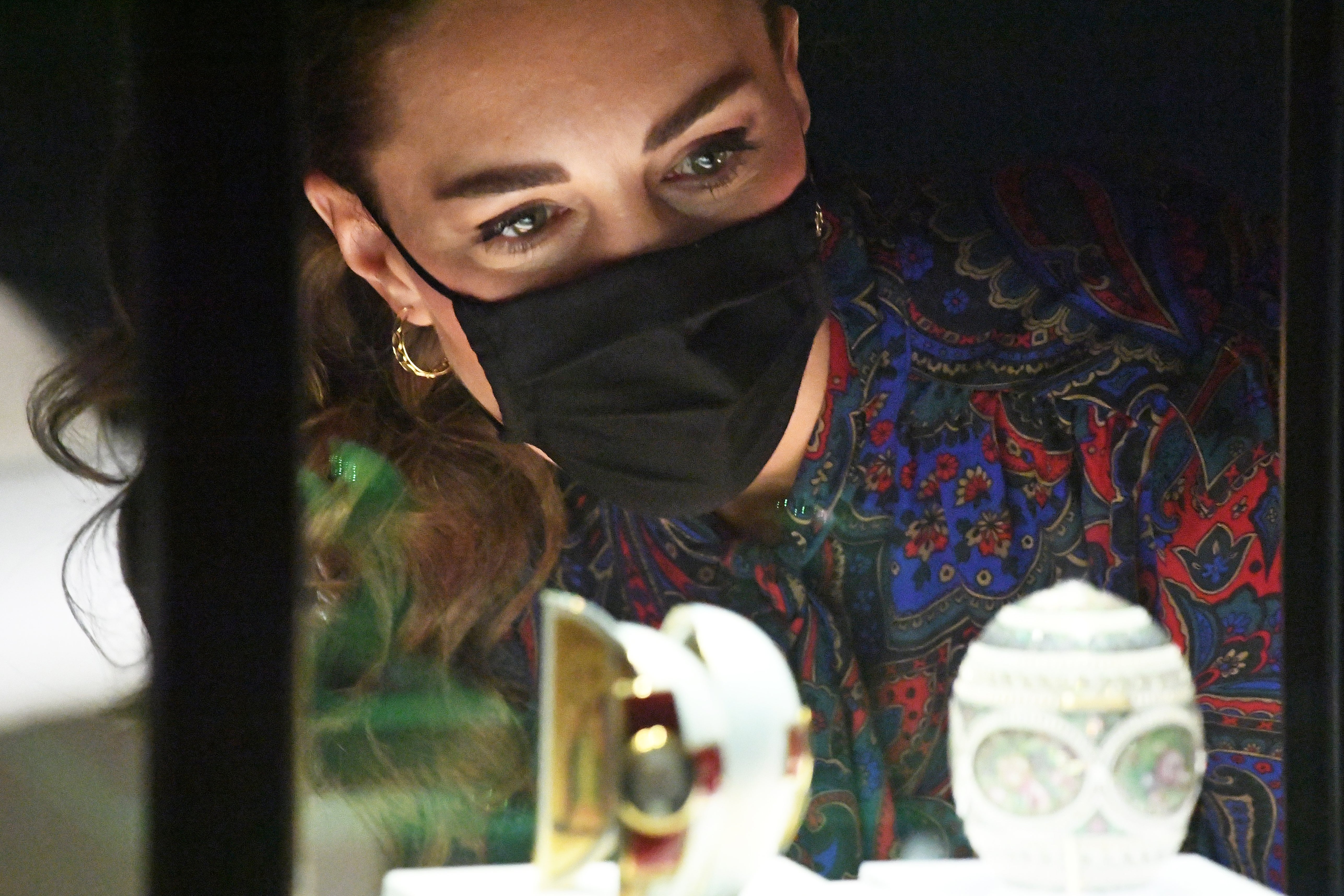Kate shows eye for detail on visit to V&A Faberge exhibition
The Duchess of Cambridge admired the intricacies of the work of Russian Goldsmith Carl Faberge in the display, which features items lent by the Queen.

Your support helps us to tell the story
From reproductive rights to climate change to Big Tech, The Independent is on the ground when the story is developing. Whether it's investigating the financials of Elon Musk's pro-Trump PAC or producing our latest documentary, 'The A Word', which shines a light on the American women fighting for reproductive rights, we know how important it is to parse out the facts from the messaging.
At such a critical moment in US history, we need reporters on the ground. Your donation allows us to keep sending journalists to speak to both sides of the story.
The Independent is trusted by Americans across the entire political spectrum. And unlike many other quality news outlets, we choose not to lock Americans out of our reporting and analysis with paywalls. We believe quality journalism should be available to everyone, paid for by those who can afford it.
Your support makes all the difference.The Duchess of Cambridge has admired the intricacies of the work of renowned Russian goldsmith Carl Faberge at an exhibition featuring items loaned by the Queen.
Kate viewed Faberge In London: Romance To Revolution at the Victoria and Albert Museum (V&A) in London on Thursday and showed her sophisticated eye for detail, according to the curator.
Wearing black wide-legged trousers and a patterned pussybow blouse, the duchess also put on a black face mask.
Face coverings became mandatory again in England’s shops and on public transport this week, in a tightening of measures amid the emergence of the Omicron variant of coronavirus.
The Government advises that, while other indoor settings might not have a legal requirement for face coverings, people should still wear one in crowded and enclosed spaces where they might come into contact with other people they do not normally meet.
Kate became the first Royal Patron of the V&A in March 2018 and last visited in May this year to mark its reopening after the pandemic forced galleries, museums and art attractions to close for months.
During her latest trip to the museum, she congratulated those behind the display, which features the largest collection of Faberge’s well-known Imperial Easter Eggs in a generation, several of which are being shown in the UK for the first time.
The duchess was accompanied on her tour, which lasted just under an hour, by V&A director Tristram Hunt and shown around by curator Kieran McCarthy.
Speaking after the visit, Mr McCarthy said Kate had been “fascinated by the whole subject”.
The duchess, who is known to be a keen photographer, showed her clear eye for detail, he added.
“That came through over and over again, just ‘How did they do that? Why does that look like that?’
“There was a lot of why and wherefore in the discussion, which was very interesting because it takes a sophistication to look beyond seeing the spectacle to actually probe into the details, and that was there.”
The collection features items lent by The Queen, including the Colonnade Egg, the Basket Of Flowers Egg and the Mosaic Egg.
Admiring the Peacock Egg, which features an enamelled gold peacock perched on a flowering tree, Kate could be heard to say “I love the tree”.
The exhibition, which opened on November 20, showcases more than 200 objects and celebrates the work of Faberge and his internationally recognised company.
Other items include the long lost Third Imperial Egg, which was discovered by a scrap dealer in 2011 after going missing in 1964.
The largest Imperial Egg – the Moscow Kremlin Egg – is also among the collection, as well as the Alexander Palace Egg, which contains a model of the palace inside.
During the visit, Kate, who at times bent down to get a closer look at the items on display, was informed about Faberge’s works and the relatively unknown Anglo-Russian nature of his enterprise, with his only branch outside Russia opening in London in 1903.
Before leaving, she told Mr McCarthy “Well done” and asked him to pass on her thanks to his team.
– The Faberge exhibition runs until May 8 next year.